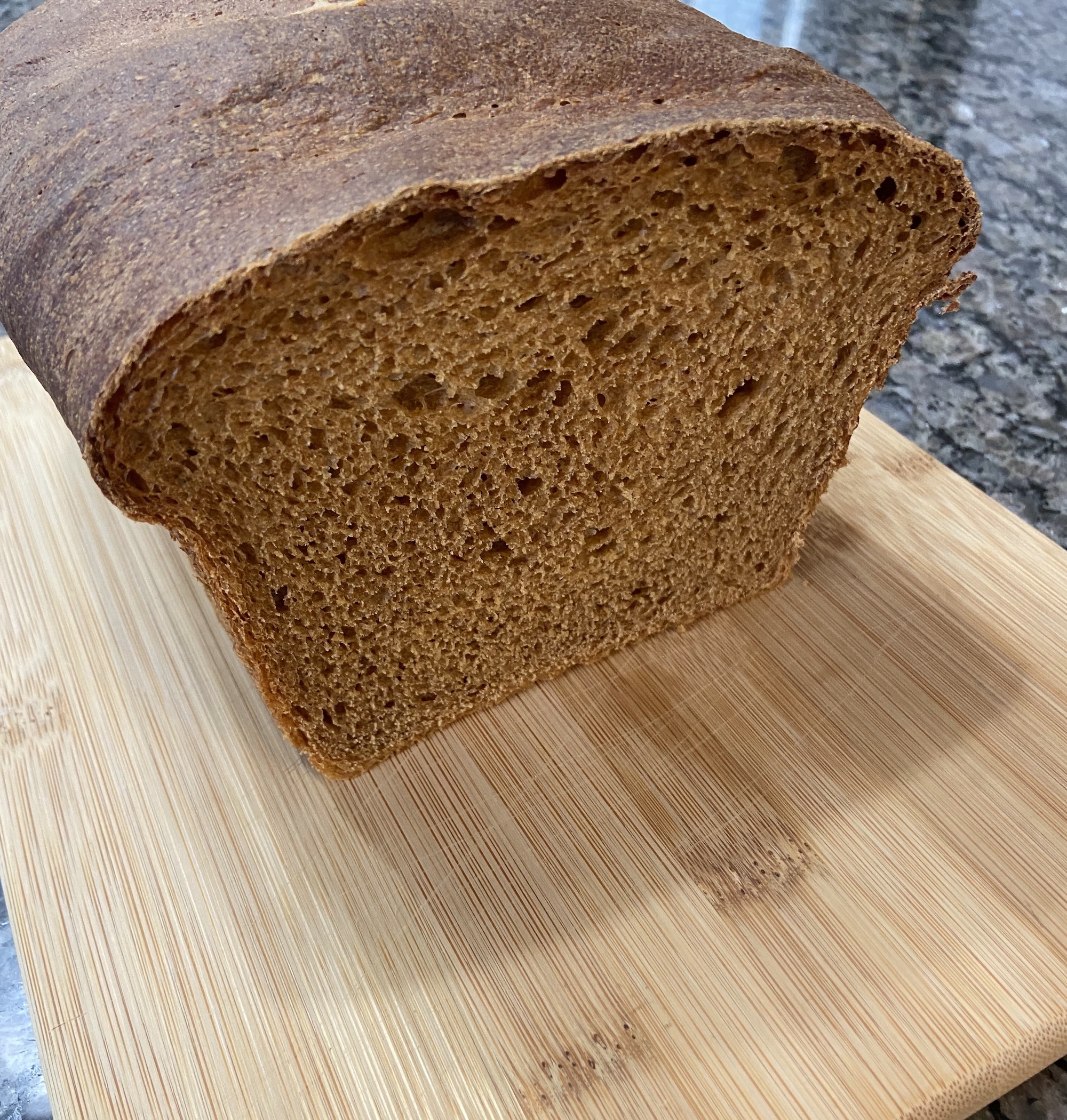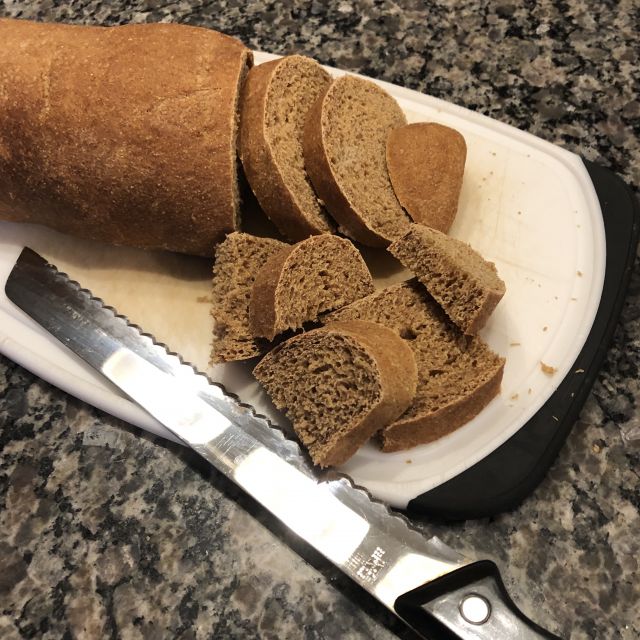Molasses Mash Bread
Mash
- 100 mL molasses
- 200 mL warm water
- 120 g whole wheat flour
Biga
- 127 g whole wheat flour
- 100 g bread flour
- 1 g yeast
- 150 mL water
Final Dough
- 200 g whole wheat flour
- 55 g bread flour
- 8 g salt
- 7 g yeast
- 14 g honey
- 14 g olive oil
Miscellany
- olive oil (for lubricating bowls)
- additional bread flour (for final dough adjustments)
- plastic wrap
Mash
- Mix the molasses, water, and whole wheat flour in a medium-sized bowl. Transfer to a sous-vide friendly bag — I typically use a sandwich-size ziptop bag inside a larger (heavier) ziptop freezer bag. Just make sure as much air as possible has been evacuated from the bag (or bags).
- Immerse in the sous vide bath at 150 °F for at least three hours.
- Remove and cool to room temperature (a couple hours).
Biga
- In a large bowl combine the flours and yeast, mixing well.
- Add the water and use a wooden spoon or your hands to mix and knead into a ball.
- Very lightly oil the dough ball and cover in the bowl for at least 4 hours or until doubled in size.
By the time the mash has cooled, the biga has usually risen enough and I can proceed with the final dough. Reinhart states that it's okay to leave the biga and mash at room temperature up to 8 hours before using, or you can refrigerate for use another day (just bring it to room temperature before proceeding). Also, you should punch-down the biga before refrigerating it.
Final Dough
- In the largest bowl of your stand mixer (outfitted with the dough hook) combine the whole wheat and bread flour, salt, and yeast. Mix briefly.
- Punch-down then cut the biga into about 12 chunks and toss in the mixer bowl to coat.
- Pour the mash over the biga and dry ingredients in the mixer bowl. Add the honey.
- Turn the mixer on low speed until the dough begins to form a homogeneous ball.
- Pour the olive oil over the dough and continue kneading with the dough hook for up to 15 minutes. The dough should be just barely sticky — enough to cling to your finger but release without leaving remnants behind. If it is too sticky add another tablespoon of bread flour, run the mixer another few minutes, and retest.
- Lightly oil a large glass bowl. Form the dough into a ball and roll in the bowl to coat. Cover with plastic wrap, pressing the dough ball into the bottom of the bowl.
- Move the bowl to the refrigerator overnight (eight hours or more). The dough will slowly rise as the yeast slowly reproduce and develop flavor in the dough.
Baking Day
- Remove the bowl from the refrigerator and allow to stand at room temperature for two hours.
- Remove the dough from the bowl: it should still be sticky, but not overly so. You could form the dough into any shape, but I prefer making two batards. Try to shape the batards without any additional flour (to prevent sticking). Dust the finished batards with a small amount of flour and transfer to a parchment-lined baking sheet. Lightly spray with oil and cover with plastic wrap.
- Proof the batards until doubled in size. I do this in my oven (it has a "proof" setting that holds a "warm" temperature for a designated amount of time) but you could do it at room temperature, too, to develop additional flavor in the dough.
- Preheat the oven to bake at 425 °F. I use a baking stone, so I hold the oven at 425 °F for at least 30 minutes before baking. I put the baking stone on the second lowest rack, and a pie tin on the lowest rack.
- When the batards are ready, use a razor to slice three or four vent cuts in the top — be gentle, you don't want to degas the dough! Slide the batards on the parchment onto the baking stone and add a cup of hot water to the pie tin.
- Lower the oven to 350 °F and bake for 10 minutes.
- Rotate the parchment 180° and continue to bake 10 to 20 minutes. The batards should be well-browned and register an internal temperature of 200 °F when done.
- Remove the batards to a wire rack and cool at room temperature for 30 minutes, then cover with a towel and continue to cool another hour.
It's worth noting that in my convection oven the batards reached 200 °F internal temperature within 20 minutes and were well-browned without having to rotate the parchment, etc.
Here's an additional picture, this time baked as a loaf:


